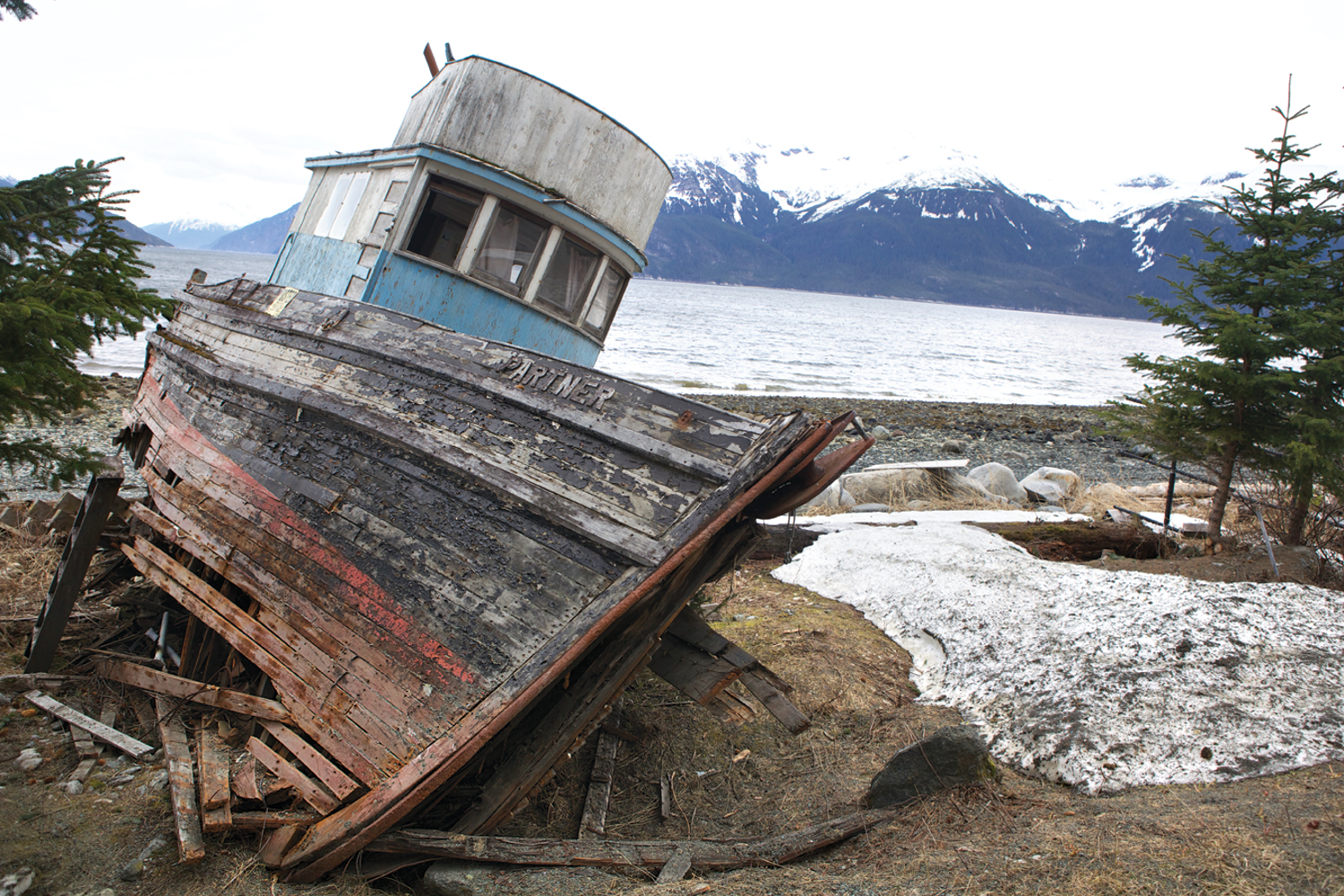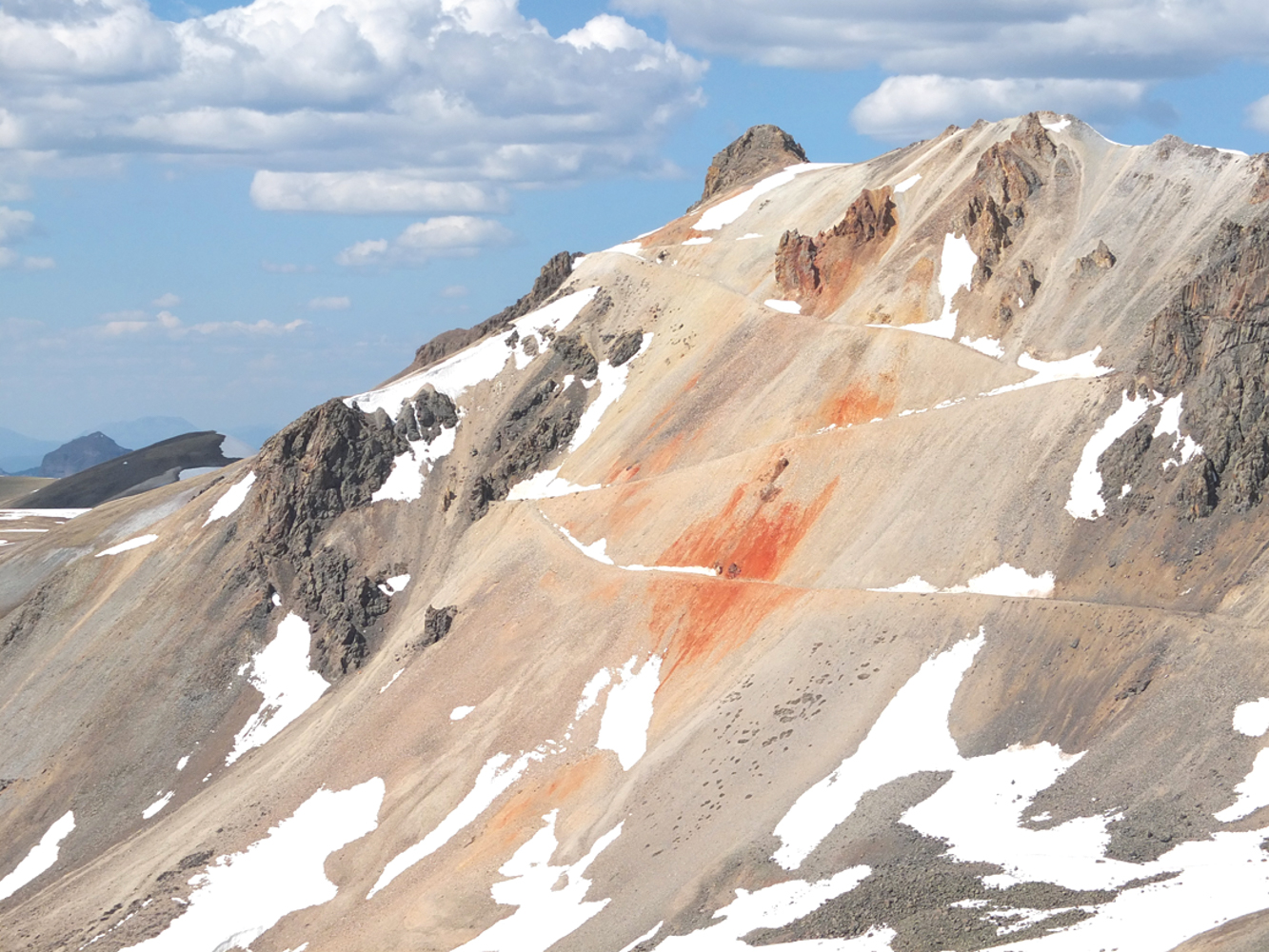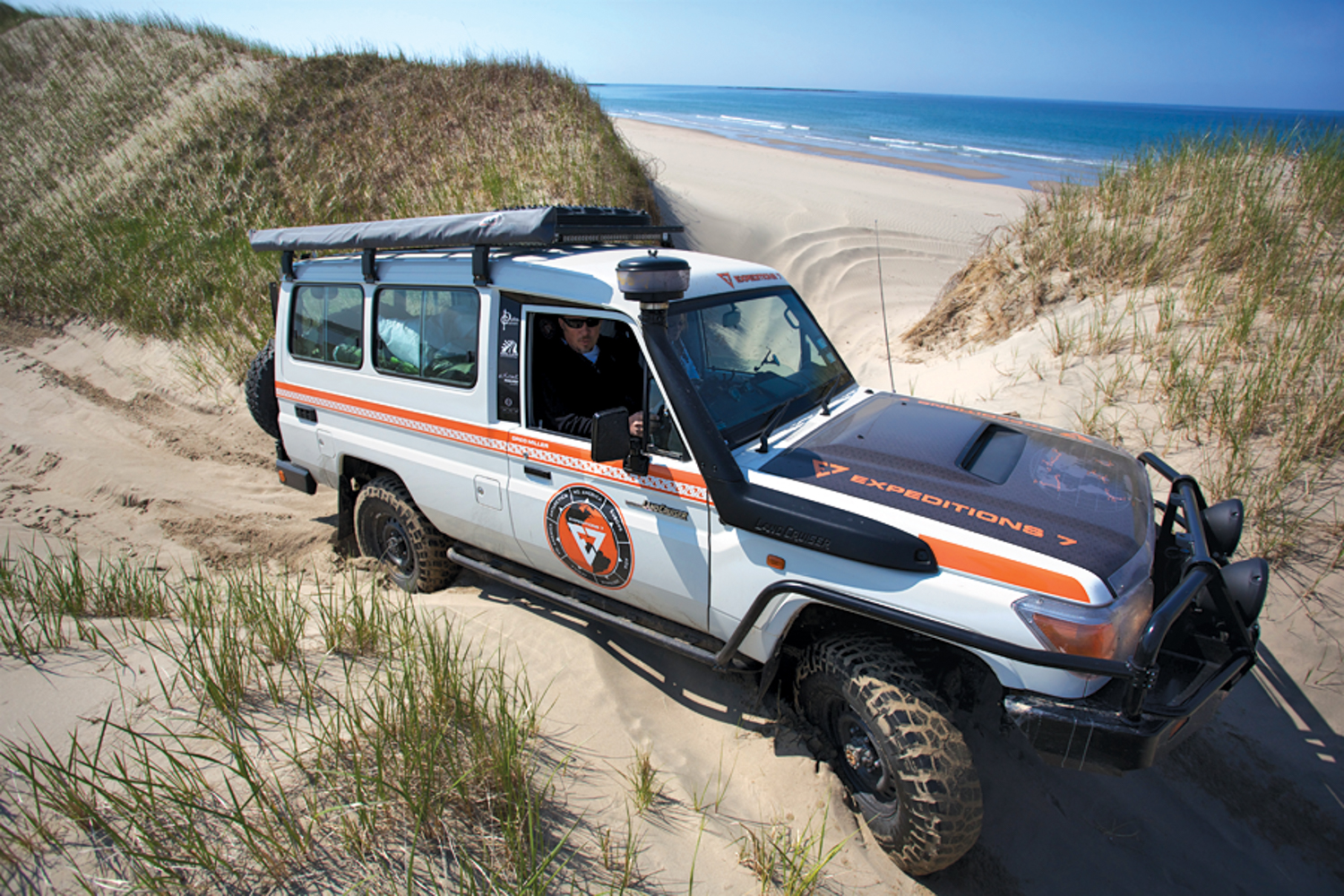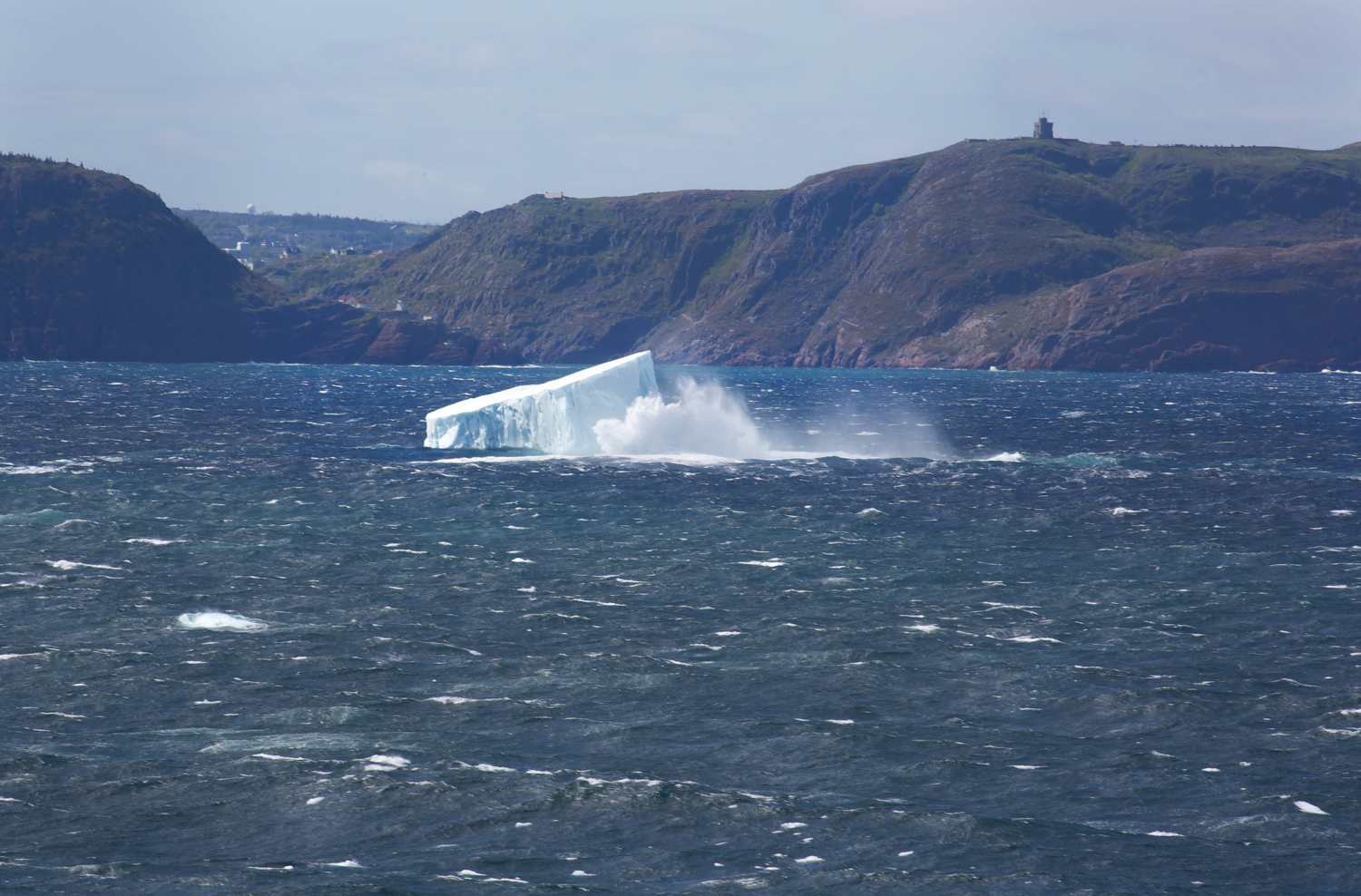The extremes have such fantastic appeal, calling out to the explorer, prospector, and romantic to risk all in the pursuit of finding their limits. The Arctic north had that appeal for our small team of adventurers, bent on driving around the world. Our proposed route would take us across North America from Prudhoe Bay, Alaska, to Cape Spear, Newfoundland, to Nordkapp, Norway, and ultimately across Siberia to Magadan. We traveled in a pair of Toyota Land Cruisers, a vehicle many consider to be the finest overland platform ever produced. We had the ultimate vehicle and the best equipment possible to achieve our goal, yet these modern solutions caused me to consider the methods and challenges faced by the first explorers to these lands.

Early exploration into Arctic regions was fraught with danger, stalwart explorers falling victim to crushing ice, scurvy, and even cannibalism. One of the most tragic accounts was that of the Sir John Franklin expedition, which departed England in 1845 in search of the fabled Northwest Passage. Equipped with the most modern equipment of the day, 129 men set sail for the unknown on two specially prepared vessels. Their quest was the last 310 miles of unexplored coastline above Canada and Alaska. All were lost and the ships never found.
Over a half century later, the Northwest Passage was finally tamed, this time by the much smaller, lighter, and more nimble expedition of Roald Amundsen, the most successful polar explorer in history. It is this type of historic event and fascinating examples of human will to overcome challenge that has drawn me back to northern latitudes. Having driven to the Arctic Ocean once before (Overland Journal, Winter 2007), I believed that Prudhoe Bay, the northernmost road-accessible point in the Americas and the terminus of the Pan-American Highway, would be a fitting start for our expedition.

Our team assembled in the rag-tag company town of Deadhorse, Alaska, a city with less than 20 permanent residents, but a temporary populace exceeding 3,000. The summer brings 63 days without a sunset. Interestingly, most of the productive work and construction occurs in the winter when the tundra freezes and transportation across the snow is more reliable. During the winter, the region does not see the sun for nearly 55 days and can experience temperatures of -62° Fahrenheit. We arrived in mid-April. Though daytime highs reached a balmy 7 degrees, the windchill seared the skin and caused eyes to tear up.


We were fortunate that team member Greg Miller had a connection with a local business owner. Through this correction we were able to obtain permission to drive one of the trucks all the way to the ice shelf of the Arctic Ocean near Prudhoe Bay. Personal vehicles had not been permitted past the guard shack since 9/11, and we felt extremely fortunate for such an opportunity. With the back wheels pushed to the edge of the ice, our adventure had begun and would ultimately take us on a 25,000-plus mile trek around the planet—the really long way.



During the months of April, May, and June 2012, the Expeditions 7 team crossed the vast expanse of North America. From the most northerly road-accessible point in North America to the most easterly, we encountered temperature ranges of over 100 degrees. We had selected the VDJ78 Land Cruiser because of its reputation for durability and reliability. Though we pushed our two 78s through deep Arctic snow, across miles of Moab’s slick rock, and over high mountain passes of the Colorado Rockies, they completed North America, a 9,000-mile leg, without even the smallest failure. We experienced some of the most magnificent scenery the world has to offer and learned much about working and traveling as a team. It had proven to be the perfect testing ground for the remote and inhospitable routes we would encounter further along the journey. We completed our North American segment on the shores of the North Atlantic and found ourselves looking further east to the largest glacier in Europe, Vatnajökull. Follow our team in the next installment of Expeditions 7 right here on Expedition Portal as we continue our trek around the world. More information can also be found on expeditions7.com


Starting in Prudhoe Bay, our team struggled against terrain and weather to push our way south, the trucks getting stuck easily once off the beaten path. However, it was those departures from the Pan-American that provided a chance to test the trucks, capture images of Arctic fauna, and for Greg’s boys to expend some energy. The frozen north was filled with wonder, reflecting centuries of the struggle between man’s determination to extract resources and inhabit this land, and nature’s power to oppose it.


In an ironic turn of events, we encountered Mr. Romano Scaturo, who is currently riding his adventure touring bicycle through all 50 states to celebrate his 50th year. He is the brother of Pasquale Scaturo, a personal friend and famed National Geographic explorer. Even more coincidental was that Romano lives less than an hour away from our Prescott office.


Ferries, a common form of transportation in Canada and Alaska, provide connection routes along the rugged coastline. The water route from Haynes to Skagway was particularly beautiful.

Nicknamed the “Sherpa,” this HZJ79 Land Cruiser (the primary support vehicle for the film crew) is a much-loved member of the team.


For the second segment of our North American crossing, we departed from the Overland Expo in Arizona, for the challenging and stunning Colorado Rocky Mountains. The high-elevation mining roads around Durango, Lake City, and Ouray, reward the driver and photographer. I was thankful the roads were not extremely technical, as the stunning views out the side window could easily distract the driver from more pressing tasks—like not going off a cliff. I’m left in awe of the conditions early settlers endured here, building roads by hand and working through the extreme winters to earn a meager subsistence. Remnants of ancient super-volcanoes, these mountains can receive snowfall in excess of 600 inches in a season.
Though I’m sure we will witness many incredible sights during our trip around the world, our trek over Engineer Pass is certainly a highlight. After dozens of trips to the San Juans, their charms have yet to fade.



A highlight of the trip was a visit to Motor City (Detroit, MI); an afternoon spent at American Expedition Vehicles, and the evening with Camillo Pardo (Designer of the Ford GT) and Mark Allen (Chief Designer for Jeep).


A crowd gathered for the start of the Gumball Rally, an annual driving event that draws famous cars and people alike. Nearly everyone shifted their attention from the rally to our parade of Land Cruisers.
Greg’s family owns the Utah Jazz, so his arrival in NYC prompted a visit from NBA commissioner David Stern.
We made a special stop at B&H Photo Video; a place Overland Journal has long patronized for our camera equipment. They laid out the red carpet and even secured us parking spaces!


Our drive through Manhattan and Times Square was a contrast between old and new, East and West, international and domestic. New York City, though it is a gateway to the world and has provided opportunity to immigrants for centuries, manages to be thoroughly American. We all had our special moments interacting with this concentration of cultures; Greg shared our route plan with some Hasidic Jews, while the rest of the team surrounded the hot dog cart. The smells of the city, and our meal, overwhelmed the senses.

Entering Canada for the third time on our journey, we stopped in Québec City, the cultural epicenter of this French-speaking region. With beautiful architecture and quaint cafés, the historic district of Vieux-Québec is one of the oldest settlements in North America. Constructed on a strategic location along the Saint Lawrence River, the first fort was built in 1535 to provide protection from the indigenous population. Its fortified walls predate anything north of the Mexican border. The city became a critical logistics center for the exchange of goods from Europe and the wilds of the New World. For our team, it proved to be a relaxing respite from the long highway drives and a fitting transition to the slower pace through the Maritimes.



Coastlines and fishing became a common theme in our exploration of Nova Scotia. Brightly painted vessels dotted the shore and waterways. With much of the fishing stock depleted, many boats have been removed from the water and relegated to a future life of decay.




Taking the ferry to Newfoundland, we finally had the chance to stretch the legs of the Land Cruisers on a coastal trail that meandered through expansive sand dunes. Within short order, we were stuck and near giddy at the opportunity to pull some winch line and set the Pull-Pal.
Though 4-ton Land Cruisers and sand don’t mix particularly well, we could not have picked a prettier place to get stuck. We spent the day driving, winching, and exploring part of the Old Newfoundland Railway. This narrow-gauge rail system operated from 1898 to 1988, when it was decommissioned and converted to a multi-use trail.
Rather than setting up tents each night, we slept above a custom drawer system in the back of the high-roof Land Cruisers. After years of global travel and hundreds of nights camping, I have found no sleeping pad more comfortable than the NEMO Cosmo. Depending on temperature, we used a combination of Mountain Hardware and NEMO sleeping bags.

The bullbar proved its mettle by providing animal strike protection and a mounting place for the much-needed winch.
The coast of Newfoundland, which is perpetually wracked by wind and sea, is both beautiful and ominous.

We stopped at Bill’s Fly Shop to hang out with Bill and his blind dog.

Crossing North America from its most northern road to its most eastern road proved to be a worthy and rewarding start to our round-the-world expedition. Cape Spear was a fitting end, its rocky cliffs pushing east into the North Atlantic with nothing beyond the horizon. As I looked east, the frigid and salted wind biting at my eyes, I considered what would be next for our team—the far more daunting task of crossing the largest glacier in all of Europe, Vatnajökull in Iceland.

Shipping a vehicle to distant lands is always a thrill, combining the anticipation of the coming adventure with the challenge and complexity of customs, shipping brokers, and daunting regulations.


